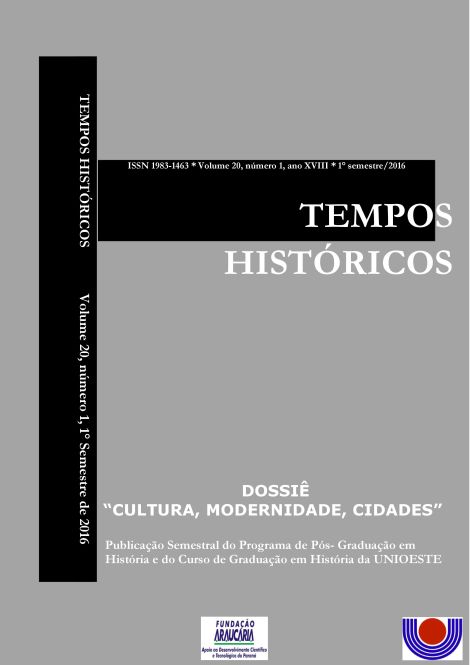PORTO ALEGRE E O PROBLEMA DAS “MATERIAS FECAES”: O SERVIÇO DE ASSEIO PÚBLICO E A CONSTRUÇÃO DA PRIMEIRA REDE DE ESGOTO NA CAPITAL DO RIO GRANDE DO SUL (1879-1912)
DOI:
https://doi.org/10.36449/rth.v20i1.13551Abstract
The aim of this paper is to address a part of the history of sanitation in the city of Porto Alegre, capital of Rio Grande do Sul. In this city, the problem of collection and disposal of "materials fecaes" has gained importance in the second half of the nineteenth century and the first decades of the twentieth century. Initially, the problem was attacked with the Public tidiness service, created in 1879, and later with the construction of the first sewer system (1905-1912). This article analyzes this sanitation valuation process in the southern capital of Rio Grande and analyzes the work of the municipal government in promoting urban health through the Public Cleanliness and building the first sewer system. The position of health and sanitation concerns engineers is also covered by Article using the documents of the City Council Chamber, the reports of the Intendencia and the newspaper The Federation as documentary sources for theme approach.
Downloads
Published
How to Cite
Issue
Section
License
Aviso de Direito Autoral Creative Commons
Política para Periódicos de Acesso Livre
Autores que publicam nesta revista concordam com os seguintes termos:
1. Autores mantém os direitos autorais e concedem à revista o direito de primeira publicação, com o trabalho simultaneamente licenciado sob a Licença Creative Commons Attribution que permite o compartilhamento do trabalho com reconhecimento da autoria e publicação inicial nesta revista.2. Autores têm autorização para assumir contratos adicionais separadamente, para distribuição não-exclusiva da versão do trabalho publicada nesta revista (ex.: publicar em repositório institucional ou como capítulo de livro), com reconhecimento de autoria e publicação inicial nesta revista.
3. Autores têm permissão e são estimulados a publicar e distribuir seu trabalho online (ex.: em repositórios institucionais ou na sua página pessoal) a qualquer ponto antes ou durante o processo editorial, já que isso pode gerar alterações produtivas, bem como aumentar o impacto e a citação do trabalho publicado (Veja O Efeito do Acesso Livre).
Licença Creative Commons
Esta obra está licenciada com uma Licença Creative Commons Atribuição-NãoComercial-CompartilhaIgual 4.0 Internacional, o que permite compartilhar, copiar, distribuir, exibir, reproduzir, a totalidade ou partes desde que não tenha objetivo comercial e sejam citados os autores e a fonte.


